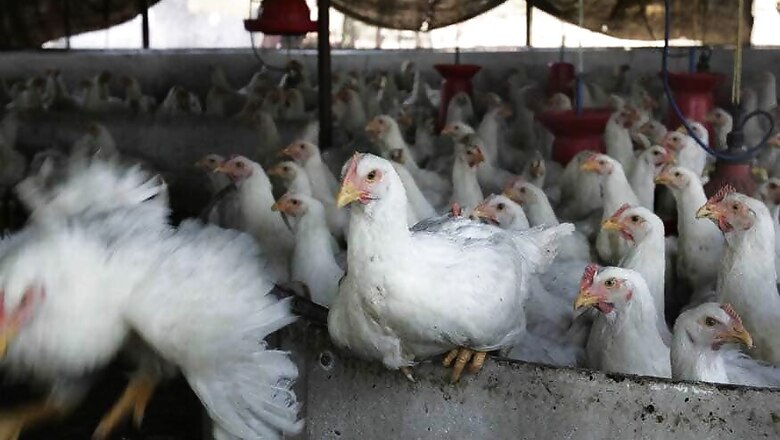
views
New Delhi: The largest ever study in India on the use of antibiotics in poultry farms has shown an unprecedented rise in antibiotic-resistant bacteria, posing a grave threat of it spreading to humans.
A new study by the Center for Disease Dynamics, Economics & Policy (CDDEP), a Washington DC and New Delhi based organisation, in 18 farms across six districts in Punjab reported high rates of resistant bacteria – with broiler farms far outdoing the egg-laying ones.
The authors say they took 1500 samples from 530 birds across large-scale farms, making it the biggest of its kind in the country.
“The study has found high resistance levels to popular broad spectrum antibiotics – 39% for ciprofloxacin (used to treat respiratory infections) and 86% for nalidixic acid (used to treat urinary tract infections),” said Dr Ramanan Laxminarayan, lead author and Director CDDEP.
The report also found that 94% of its samples had multidrug resistance (MDR) and 87% had ESBL producing bacteria, essentially an enzyme that breaks down antibiotics rendering them ineffective.
“In 2005, the United States had banned these antibiotics for use in poultry farms, a move followed by the EU in 2006,” said Laxminarayan, “but these antibiotics are still widely used in India.”
In fact, he said, the range of unregulated antibiotic used in farms here was “mind-boggling”.
Furthermore, the research suggests that many clinically important antimicrobials were being used indiscriminately.
Crucially, meat producing or broiler farms showed higher levels of resistance than their egg-laying counterparts. Antibiotics used for growth help get the chicken to the market in 35 to 40 days, so that farms don’t have to spend more on rearing and feeding them. An egg-laying chicken is kept on the farm for its life span of little over a year, needing fewer drug doses.
“We’ve long used antibiotics for nutrition and growth promotion. Severely malnourished children are given antibiotics,” said Laxminarayan. However, this practice is now obsolete in most parts of the world, he added.
The situation is set to get worse, as antimicrobial consumption in food animal production in India is projected to grow by 312% in the next 15 years, says the study. India is the largest consumer of antimicrobials, said the report.
Despite the need to establish exact causes, resistance goes back and forth between humans and animals, said Laxminarayan. “No scientist will say that humans and animals live in bubbles isolated from each other. Hence, rising antimicrobial resistance (AMR) in farms will affect humans – starting with the farm labourer who come in direct contact with the birds (often without protective gear), the villagers (drinking water from farm run offs), the consumers and soon everyone. The most vulnerable are the new-borns.”
“The bacteria doesn’t stay on a farm in Ludhiana. It spreads. There is a silent epidemic of antimicrobial resistance in hospitals,” explained Laxminarayan. The gut bacteria mixes more easily with food and water sources in India, making its way into our food system.
The study found that almost 60% of the Escherichia coli (E. coli) samples contained ‘resistance conferring’ genes, which not only render many antibiotics ineffective but can also easily pass on to other types of bacteria.
Though several previous studies have pointed out this trend, according to Laxminarayan, there was no recognition of the scale of the problem.
Though India has developed a National Action Plan to combat Antimicrobial Resistance, there needs to be more urgency, said Laxminarayan. “It cannot be a five-year plan, we’ll lose all our antibiotics by then.” Without immediate action, India continues to barrel towards a post antibiotic world.




















Comments
0 comment